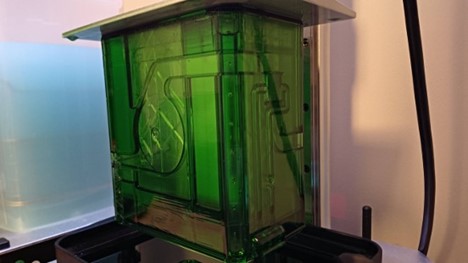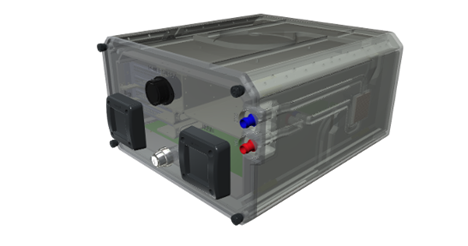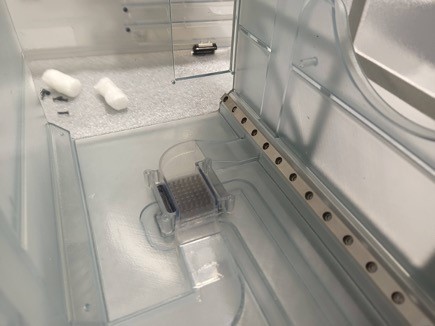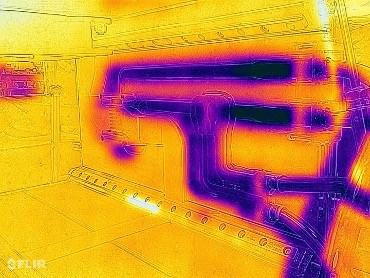Universal Ruggedized Computer Enclosure
High-Efficiency, Ruggedized Thermal Enclosure for High-Performance Computers
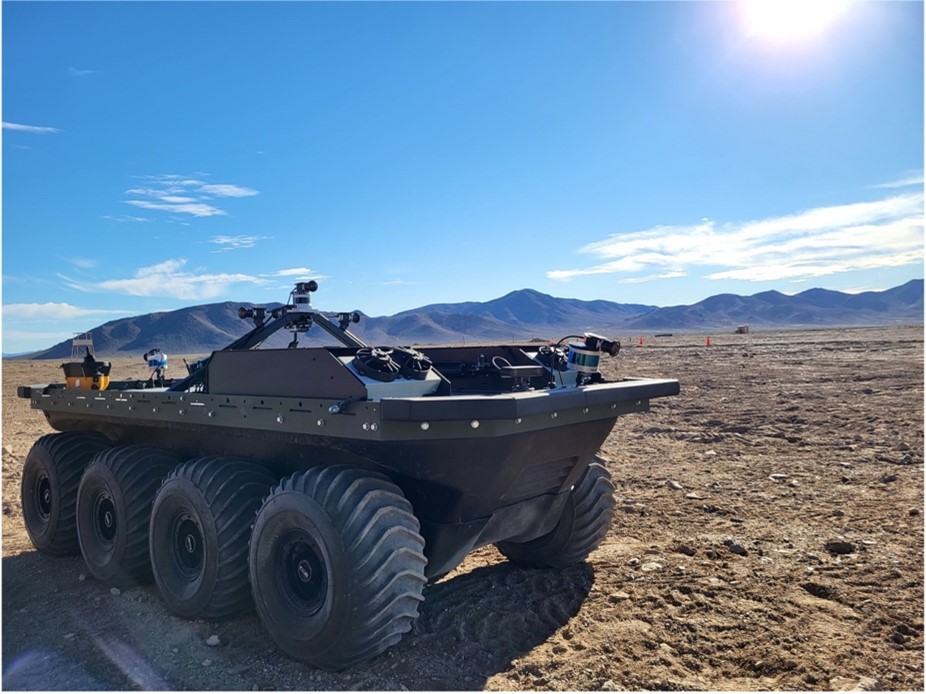
High-performance desktop computers that can handle heavy software development are not designed for harsh environments. Current options include either ruggedized commercial off-the-shelf (COTS) computers or ruggedized computer enclosures, such as sealed pelican cases.
Ruggedized COTS computers typically lack heavy computing power and often have outdated hardware components by the time they are in use in the field. Additionally, they are also expensive and cannot be fitted with new motherboards or PCIe (Peripheral Component Interconnect Express) expansion cards.
Sealed pelican case-type enclosures often create a large form factor compared to purpose-built ruggedized computers. Additionally, these systems use air- and/or water-cooling solutions that require a lot of space and power, have limited shock dampening, and are not known to be able to withstand severely rugged or harsh environments.
This universal enclosure system was developed to allow the latest cutting-edge high-powered computing technology to be integrated into a compact and ruggedized formfactor for use in military robotic applications. It is easily integrated with common high-performance COTS desktop computers, printed circuit boards, and/or ATX (Advanced Technology eXtended) style motherboards.
The system enclosure can include:
- Integrated water cooling
- A heat exchanger that cools the ambient circulating air
- A positive pressure system that filters particulates, removes moisture from outside air, and provides ingress protection via constant pressure inside the system
- A unique mounting method for PCIe expansion cards that reduces the overall size
- Adjustable air suspension for extreme shock and vibration protection
- An inner core that supports customization of accessories
The design enables every cubic millimeter of the hardware enclosure to act as an active component in the cooling process in addition to providing protection against a variety of environmental hazards such as extreme temperature, humid and damp conditions, shock and vibration, and electromagnetic interference.
This technological approach allows for a significant reduction in the footprint of the system, while providing cooling and other protection for computers and peripherals that can enhance the performance and lifespan.
Benefits:
- Enhanced performance: More efficient heat dissipation leads to lower operating temperatures for internal components, which allows components to maintain higher performance levels for longer periods
- Durable: Reduced operating temperature and limiting exposure to harsh environments can extend the lifespan of heat-sensitive components
- Versatile: An adjustable suspension enables adapting the enclosure to differing environments and varying payloads
- Compact: With coolant-filled wall chambers that eliminate the need for an external reservoir, the system requires 10 to 35 percent less space than a standard rack-mount computer case
Applications:
- Military field operations
- Industrial settings involving high levels of dust, vibration, or temperature extremes
- Robotics and unmanned electronics
- Outdoor applications requiring sensitive onsite computing
Patents
- 20240114653 (Search patent)
- 20250098105 (Search patent)

